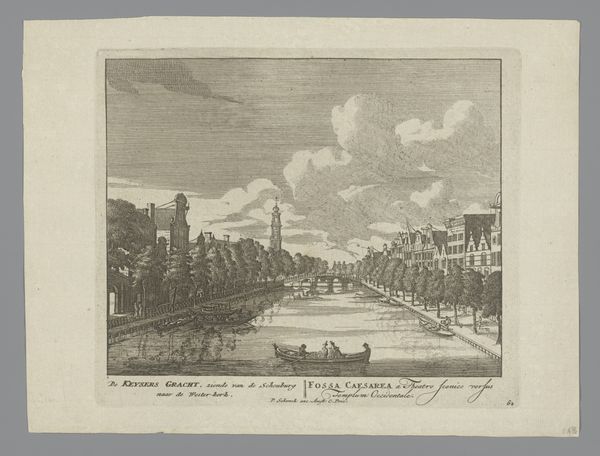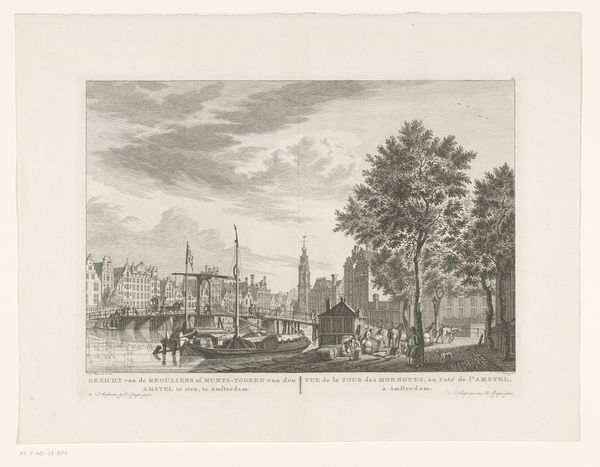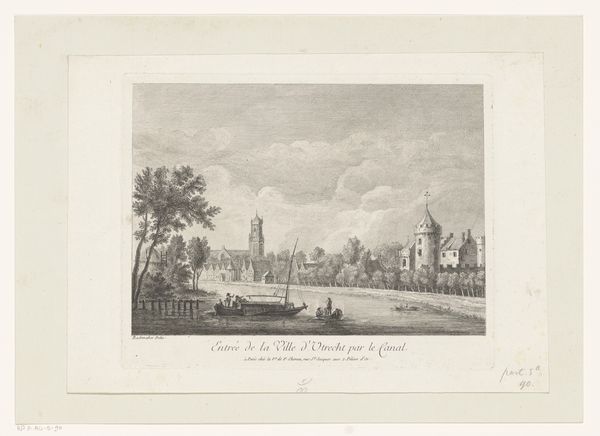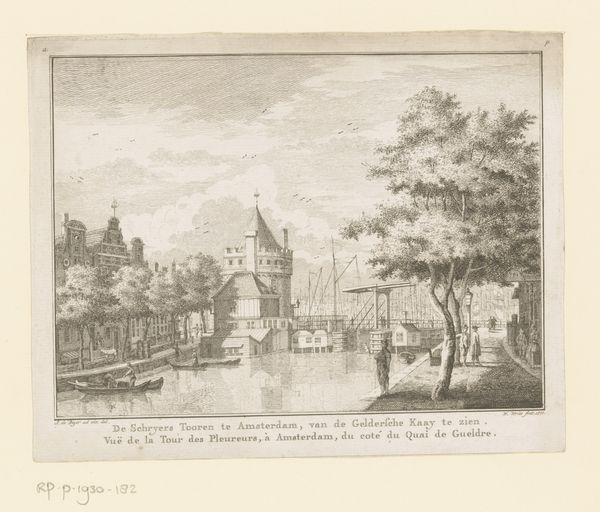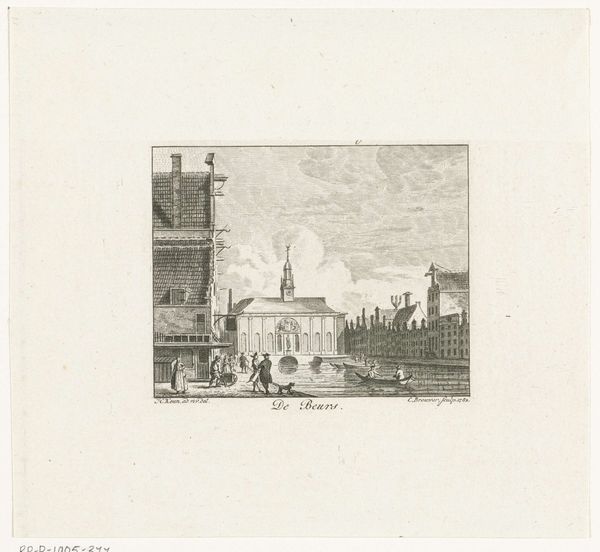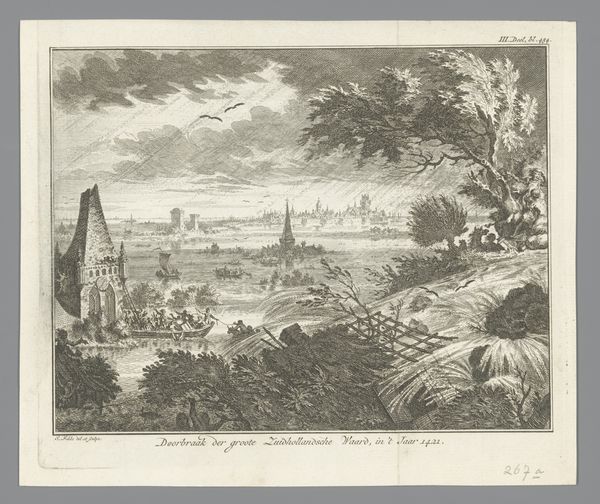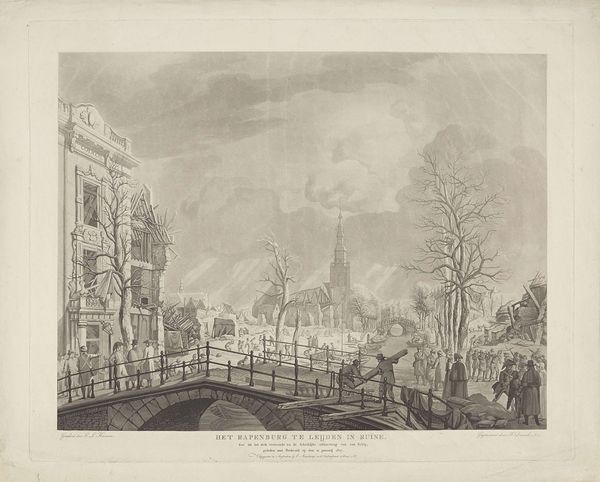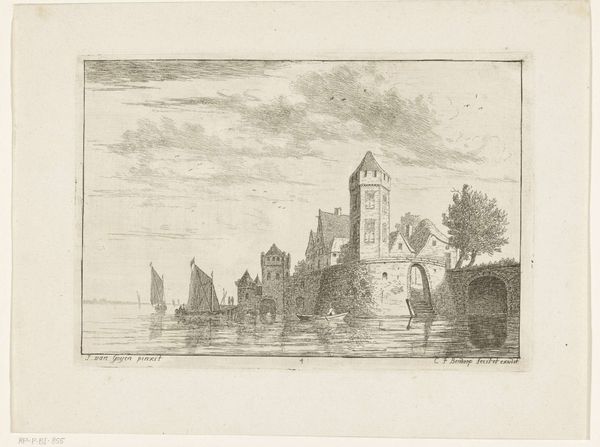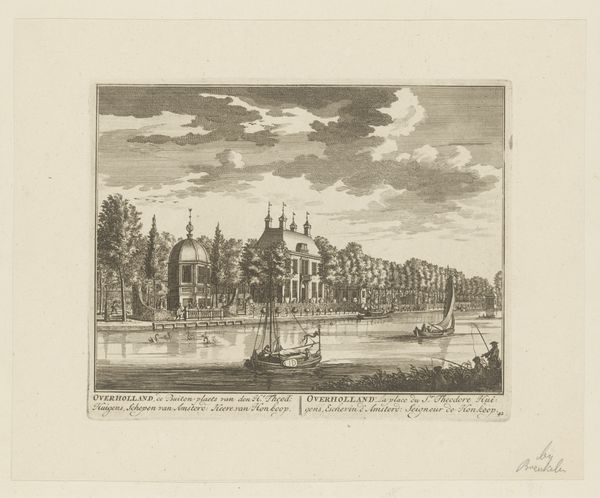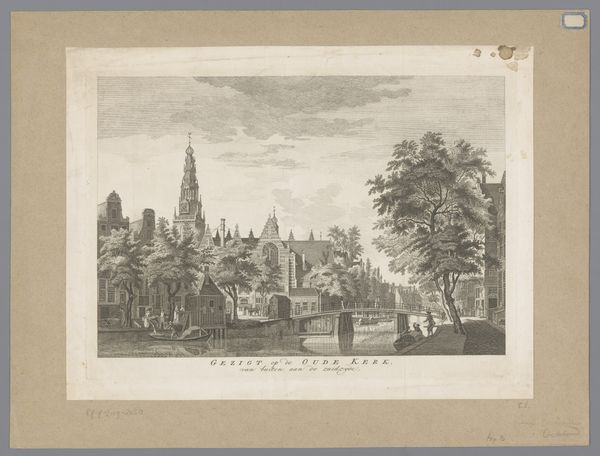
drawing, paper, ink
#
drawing
#
landscape
#
paper
#
ink
#
romanticism
#
cityscape
Dimensions: height 145 mm, width 201 mm
Copyright: Rijks Museum: Open Domain
Editor: So, this is "Stadsgezicht bij maanlicht," or "Cityscape by Moonlight," created with ink on paper by Bartholomeus Johannes van Hove between 1800 and 1826. The subdued tones give it such a serene, almost melancholy feel. What historical currents do you think shaped this particular cityscape and its artistic representation? Curator: A very perceptive observation! This piece emerged during a fascinating period in Dutch history. Consider the rise of Romanticism; artists began to prize emotionality and individual experience. But also think about how urbanization was transforming the Netherlands. What do you notice about how van Hove depicts the city? Does it feel bustling or something else? Editor: It definitely doesn’t feel bustling. It's quiet, almost staged. I mean, you can see people, but the city looks so...calm. Almost idealized. Curator: Exactly! While the city was changing rapidly, driven by industry and population growth, this image emphasizes the past, a sense of tranquility associated with the traditional Dutch city. The moonlight washes over the scene, romanticizing and somewhat obscuring any signs of modern life. Think of how paintings gain value as national symbols. What statements about Dutch identity do you think a scene like this might promote? Editor: So it's not just about accurately depicting a city, it's also about shaping how people perceive that city and their connection to it, even as the city transforms? Curator: Precisely. Van Hove wasn't just recording what he saw; he was participating in a broader cultural project of defining, and perhaps preserving, an image of the Netherlands as it navigated modernization. And art became a key instrument. Editor: That really shifts my understanding of the image. I thought it was just a pretty picture. Now I see how the seemingly simple portrayal is really loaded with historical meaning. Curator: It's these tensions - between representation, identity, and historical context - that make these images so compelling, right?
Comments
No comments
Be the first to comment and join the conversation on the ultimate creative platform.
